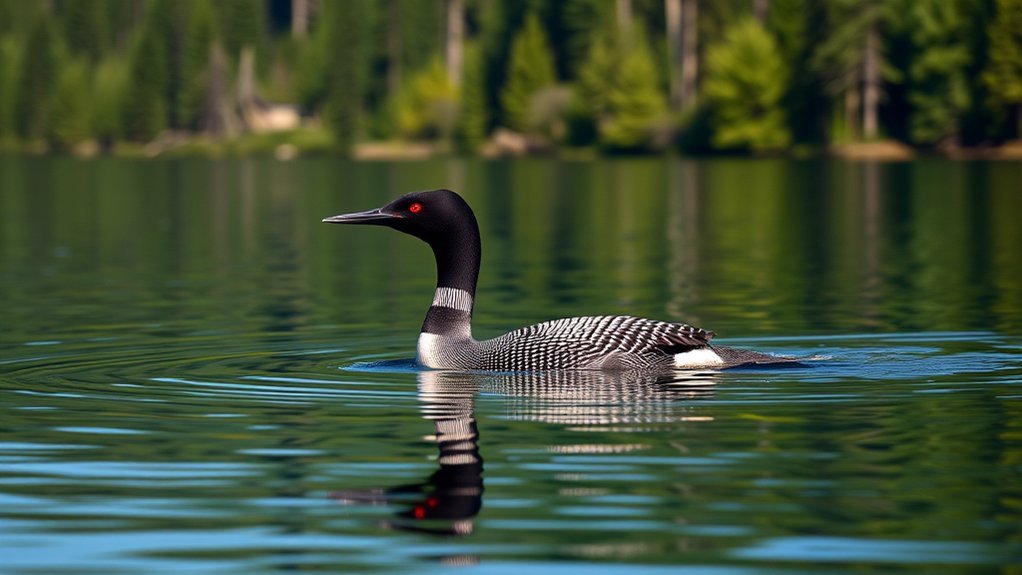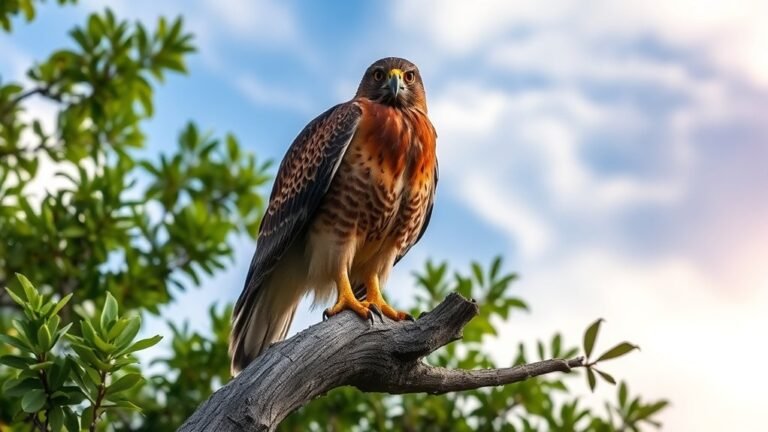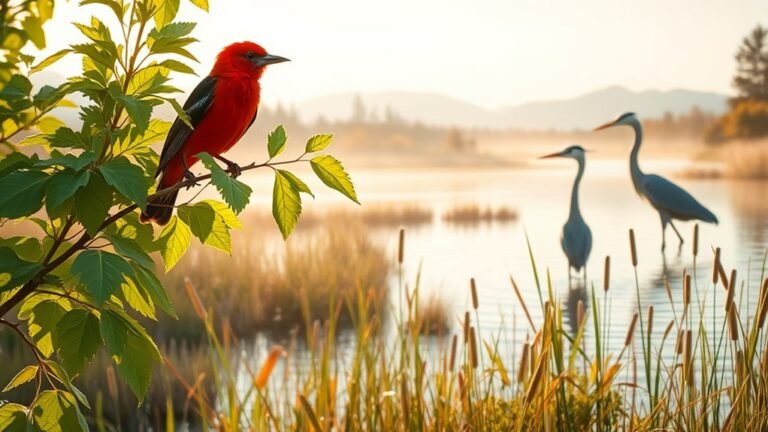The Common Loon: Facts and Habitats
The Common Loon is a beautiful bird with black and white feathers and bright red eyes. People love to watch it because of its unique look. This bird lives mainly in freshwater lakes and ponds. It needs clean water and healthy habitats to thrive.
The Common Loon eats fish, insects, and small creatures from the water. It dives underwater to catch its food, showing off its skills. When winter comes, many Common Loons leave their breeding grounds. They migrate to warmer areas along the coast or to open ocean waters.
The health of lakes and ponds affects how well the Common Loon can survive. Pollution and habitat loss can harm both the bird and its environment. It's essential to protect these precious ecosystems.
Many things can help the Common Loon stay safe. These include clean water laws, protected areas, and community efforts to reduce pollution. By taking care of its home, we can ensure that this wonderful bird continues to thrive.
What do you think we can do to help the Common Loon?
A Quick Overview
The Common Loon is a bird with special black and white feathers. It has a shiny black head and bright red eyes that make it easy to spot.
This bird likes to live in freshwater lakes where there are plenty of fish to eat. It finds lakes with lots of plants because they are good for nesting.
When it's time to eat, the loon dives under the water to catch fish. It has sharp eyesight and a smooth body that helps it swim quickly.
Breeding season is a family time. Both parents work together to build a nest and take care of their two eggs.
In late summer, loons fly to the coast. They leave their lakes but come back in spring to nest again.
The Common Loon is truly an amazing bird!
Characteristics of the Common Loon

The Common Loon is a special bird found in North America. It's easy to spot because of its beautiful black and white feathers, especially when it breeds. During this time, it has a shiny black head and bright red eyes that make it look really cool.
This bird has a long, pointy beak. This beak helps it dive underwater and catch fish. One of the most interesting things about the Common Loon is its spooky calls. These sounds can be heard echoing across lakes, especially in the early morning and late evening.
You might also see the Common Loon dive deep into the water. It can stay underwater for a long time while searching for food.
All these features and behaviors make the Common Loon a captivating bird to watch and listen to in nature.
Habitat Preferences
Common Loons like to live in special places where they can find what they need to survive.
They often choose freshwater lakes that have plenty of space for nesting and lots of fish and plants to eat. These birds prefer lakes with clear water and some vegetation around it, as these features help them breed and hunt successfully.
Common Loons enjoy areas with open water, islands, or protected bays. This variety helps them find food during breeding season.
In cooler areas, you might spot them in lakes that are surrounded by evergreen trees, showing that they can adapt to different environments.
Understanding where Common Loons like to live helps us appreciate how fragile and balanced nature can be.
Feeding Habits and Diet

Common Loons have interesting feeding habits that show how they adapt to their surroundings. These birds dive into the water to catch their food. You can often see them swimming low in the water, searching for fish, which is their favorite meal.
Besides fish, loons eat crustaceans and amphibians. This variety helps them live in different watery places.
Loons have sharp eyesight, which lets them find food quickly. Their sleek bodies help them swim well. Learning about how loons eat shows us just how flexible they're and why it's important to keep their homes safe and healthy.
Nesting and Breeding Behavior
Nesting and breeding behaviors are important parts of Common Loon life. These birds like to find quiet places near fresh lakes to build their nests. They often choose spots with thick plants to help protect their eggs from predators.
During mating season, Common Loons have fun courtship displays. They swim together in perfect time and make special calls to each other. This helps them build strong bonds as a pair.
When it's time to nest, both the male and female loon work together. They gather water plants and stick them in shallow water to create the nest. The female usually lays two eggs.
Both parents take turns keeping the eggs warm and looking after the chicks once they hatch. Learning about how Common Loons nest and breed helps us understand how they live and thrive in their environment.
This knowledge is key to helping keep their species going.
Migration Patterns

Many birds fly south for the winter, but Common Loons take a very interesting trip. They leave their homes in northern areas during fall to find warm places by the coast.
Here are four important things to know about their migration:
- Timing: Common Loons start their journey in late summer and early fall.
- Routes: They follow set paths to stay safe from bad weather.
- Winter Habitat: They like to stay in coastal waters when it gets cold.
- Return Journey: In spring, they fly back to their homes and often go to the same nesting spots they used before.
Learning about how Loons migrate shows us how strong and connected they're to their homes. It helps us appreciate these amazing birds even more!
Vocalizations and Communication
Common Loons are fascinating birds, and their sounds are a big part of their lives. They've a wide range of calls that let them share different messages with each other. You might hear their eerie-sounding calls, which can seem like singing. These calls help them mark their territory, attract a mate, or warn others of danger.
Loons can also mimic the calls of other birds. This skill might help them confuse predators or rivals.
Learning about their sounds can help us appreciate their social lives. It also reminds us of the amazing connections in nature. Engaging with these birds makes us think about the beautiful web of life around us.
Conservation Status
Common Loons are beautiful birds that live in northern lakes, but they need our help to stay safe and healthy.
Here are some simple ways you can help protect them:
- Keep Water Clean: Do your best to reduce pollution. Clean lakes are good for the Loons and all the wildlife around them.
- Protect Their Homes: Make sure to keep their nesting areas safe. Avoid building near their homes or disturbing them.
- Support Conservation Groups: Find and help organizations that are working to protect Loons. Your support can make a big difference.
- Be a Responsible Boater: When you're out on the water, stay away from places where Loons are nesting. This helps keep them calm and safe.
By following these steps, you can help ensure that Common Loons continue to thrive in our lakes.
Let's work together to protect these amazing birds!
Ecological Importance
Common loons are important for nature. They help keep lakes and rivers healthy. When loons eat fish and tiny water creatures, they control their numbers. This way, other animals in the water can thrive too.
Loons also tell us about the health of the environment. If their numbers change, it might mean something is wrong with the water quality or the plants and animals around them. Their nests provide homes for other small creatures as well, showing they support life in many ways.
Having loons around increases the variety of wildlife. They live alongside many different species, making the ecosystem richer.
Viewing and Observation Tips
Watching common loons in their homes is a fun experience for nature lovers. Here are some simple tips to help you spot them and enjoy responsibly:
- Look in the Early Morning or Late Afternoon: Loons like to be active when it's dim. You'll have a better chance of seeing them during these times.
- Be Quiet and Patient: Stay quiet. Loud sounds can scare loons away. Patience is key, so take your time and enjoy the moment.
- Use Binoculars: A good pair of binoculars helps you see loons up close without getting too close to them. This keeps them safe and calm.
- Stay Back: Watch from a distance. This way, you won't disturb their natural activities and can see how they live in the wild.
Following these tips will make your loon-watching adventure fun and respectful!
Enjoy the beauty of nature!
Frequently Asked Questions
What Is the Lifespan of a Common Loon in the Wild?
In the wild, a common loon can live for about 20 years. Many things can change how long they live, like the environment and how much food is available. This shows that everything in nature is connected, and each part helps the others survive.
How Do Common Loons Adapt to Climate Change?
Common loons are changing how they breed because of climate change. They are starting their nesting earlier and in different places. This helps them handle warmer water and find food more easily. These changes are important for their survival as the environment shifts. By adapting in these ways, loons keep themselves safe and healthy.
Are Common Loons Migratory Birds or Resident Species?
Common loons are migratory birds. In winter, they move to warmer waters. Some loons choose to stay in friendly places all year long. Learning about how they migrate and settle helps us understand how they adjust to their surroundings. They show us how to survive in different situations, which is pretty fascinating!
What Are the Major Threats to Common Loon Populations?
Common loon populations face serious threats. Climate change affects their homes. Changes in temperature and weather can harm where they live and breed.
Human activities also destroy their habitats. Building roads, homes, and other structures can make it hard for loons to find safe places to raise their chicks. Both climate change and habitat loss make it tougher for loons to survive. They need clean lakes and safe areas to thrive.
We can help by protecting their homes and making sure lakes stay clean. By working together, we can support common loons and help them live and breed successfully.
How Do Common Loons Compare to Other Waterbirds?
Loons and ducks are both waterbirds, but they look and behave quite differently. Loons have long bodies and pointed bills. They are experts at diving deep underwater to catch fish.
Ducks, on the other hand, are often rounder and have softer voices. They swim on the surface and tend to eat plants, insects, and small fish.
While both birds live near water, loons are unique in their diving skills. They are built for speed and agility under the water. This makes them stand out among other waterbirds.

Luna is the passionate founder and author of Birds and You, a website dedicated to sharing her love for birds with fellow enthusiasts. Through her engaging articles and guides, she aims to educate and inspire others to explore the fascinating world of birds. When she’s not writing, you can find Luna observing birds in their natural habitats or sharing beautiful bird photography on Pinterest. Join her on this journey to celebrate and protect our feathered friends!







